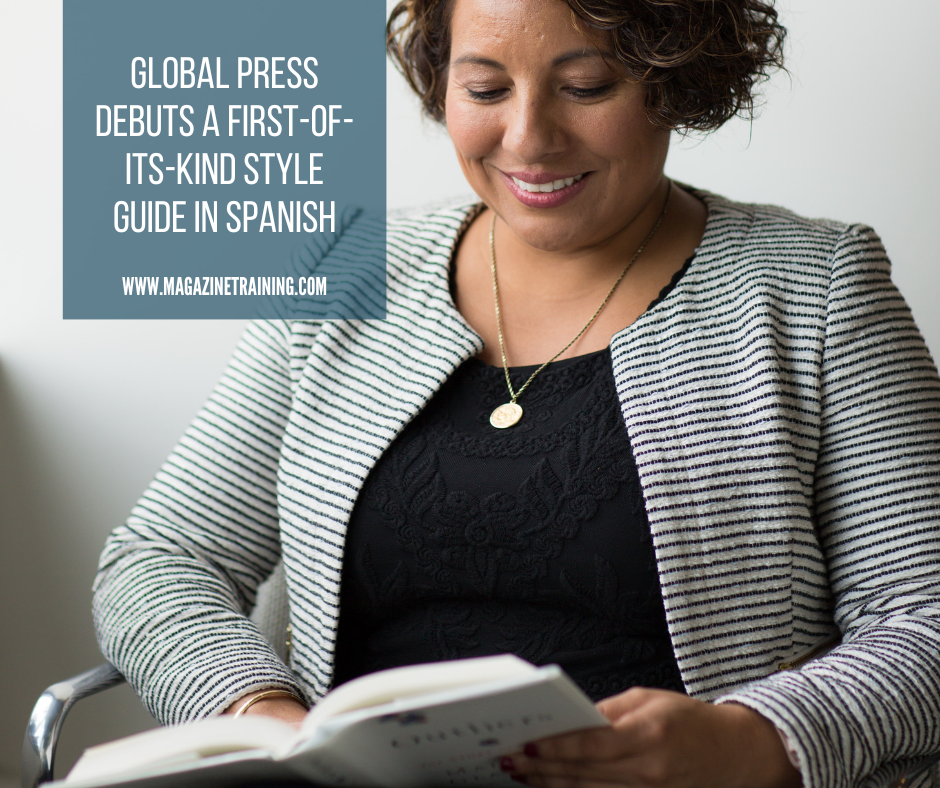
The Guía de estilo for dignified reporting is free and available online
Below is an excerpt from The Collective, Poynter’s newsletter by journalists of color for journalists of color and our allies. Subscribe here to get it in your inbox two Wednesdays each month.
Para leer en español, haga clic aquí.
Recently, I read this sentence in a United States-based print publication: “Hispanics from Puerto Rico and the Dominican Republic began to settle in the area.”
It reminded me of a bumper sticker my father created decades ago, which fast became popular all over my hometown of Miami — “No me diga hispano, soy cubano” (“Don’t call me Hispanic, I’m Cuban”).
Using generalized terms like “Hispanic” to describe people from the Caribbean is not only imprecise, it perpetuates stereotypes and prevents readers from recognizing themselves in stories and better understanding the world.
Over a decade ago, our team at Global Press Journal created a boundary-pushing style guide in English to ensure greater dignity and precision in international journalism.
Now, as the publication’s standards editor, I’m proud to debut the Guía de estilo, a Spanish-language style guide created by our journalism professionals, including reporters who work in our independent news bureaus in Argentina, Mexico and Puerto Rico.
The Guía establishes rules for referring to people, places and issues around the world that are often miscovered or undercovered in the media. Spanish-language writers often face difficult word choices in their everyday work. The Guía provides guidance to allow sources the dignity they deserve, while ensuring reader clarity and precision.
The Guía de estilo focuses on dignity and precision
The first of its kind in Spanish, Global Press’ Guía de estilo is a free online resource based on the same three principles as its English-language counterpart, which has been adopted by dozens of newsrooms and organizations around the world.
- Principle 1: Don’t use words that force people to make assumptions. Dignified and precise language better serves sources and readers. Terms like “países en vías de desarrollo” (“developing world”) and “Sur Global” (“Global South”) are just sanitized synonyms for poverty and do nothing to help the reader understand the place the journalist is writing about.
- Principle 2: People should be referred to as people as often as possible. Avoiding labels ensures source dignity and reader clarity. Shifting to verb-based, rather than identity-based descriptions eliminates words like “víctima” (“victim”), “sobreviviente” (“survivor”), “discapacitado(a)” (“disabled”), and “prisionero(a)” (“inmate”), all of which the Guía advises against using. These terms encourage the reader to rely on stereotypes and deny sources due dignity by defining them based on circumstances they have endured.
- Principle 3: Precision is required for dignity. Accurate and precise terms are necessary to prevent bias and stereotypes. Sources should always be allowed to self-identify, so that they can recognize themselves in stories. Words like “terrorista” (“terrorist”) and “rebelde” (“rebel”), for example, are imprecise, undignified and could indicate bias.
Our team debated and carefully crafted every entry in the Guía de estilo to promote dignity and precision in Spanish-language journalism. All entries include clear instructions (use or don’t use) and rationales that describe the context and reasoning behind the rule.
Here are a few highlights:
- With gendered articles, nouns and pronouns, writers often default to the generic masculine with the belief that it is inclusive. But is it? The “sustantivos y pronombres en español” entry addresses gendered plural nouns and offers inclusive alternatives while remaining true to Spanish-language grammar rules. For example, the Guía suggests “la población mexicana” (“the Mexican population”) as an alternative to “todos los mexicanos” (“all Mexicans”).
by Terry Aguayo, Poynter
Photo by Christina @ wocintechchat.com on Unsplash
Related posts
Magazine Training International’s mission is to encourage, strengthen, and provide training and resources to Christian magazine publishers as they seek to build the church and reach their societies for Christ.

